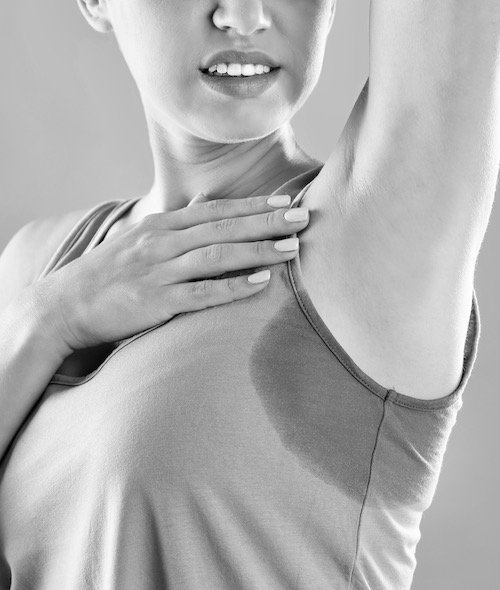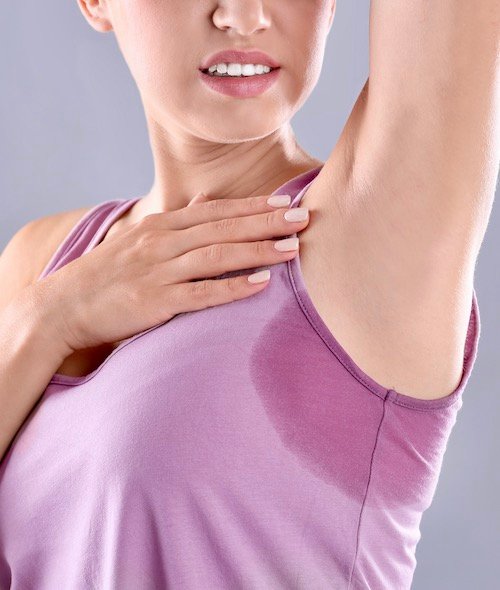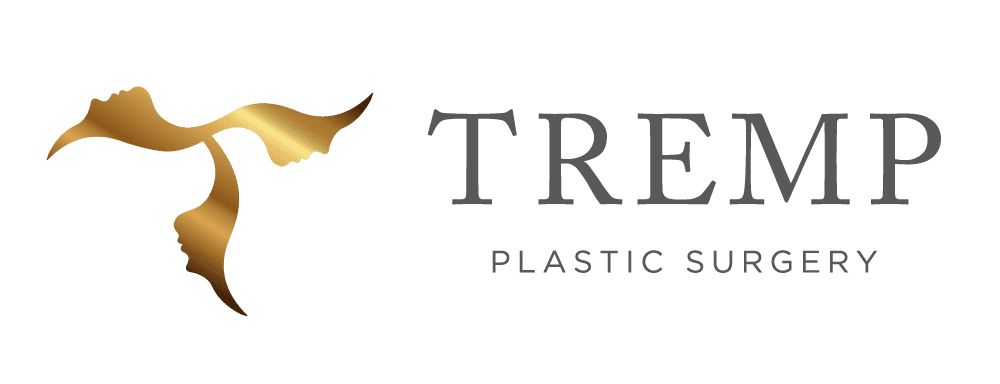- About
- Face & Skin
- Cellulite treatment
- Excessive sweating in women and men
- Facial and skin treatments
- Facial Surgery
- Hydrafacial treatment
- IV drips (vitamin infusions)
- Laser treatment
- Lip Lift
- Mesotherapy (skin structure )
- Special Offers by TREMP PLASTIC SURGERY
- Treatments with Skin Ceuticals
- Wrinkle and facial treatments with botulinum
- Wrinkle and facial treatments with filler
- Face
- Breast
- Body
- Offers
- Blog
- Contact
- EN
- DE
Sweating is a vital and normal process and serves to regulate the heat balance. The sweat glands are controlled by the sympathetic nervous system. The sweat glands are particularly numerous in the armpits, head area, on the hands and on the soles of the feet. Excessive sweating (= hyperhidrosis) is a malfunction of sweating, the sweat glands are overactive and secrete a quantity of sweat that exceeds the healthy level.
Increased sweating can be a relevant problem, there is a high level of suffering. The consequences are often insecurity and isolation. Overall, about 3% of the population suffer from hyperhidrosis, 51% of them in the armpits. It is important to distinguish between excessive sweating caused by an illness or medication (secondary hyperhidrosis), or without an identifiable cause (primary hyperhidrosis). Treatment of primary hyperhidrosis can lead to a significantly improved quality of life and well-being. A step-by-step approach to therapy is recommended.


Which regions sweat a lot?
Primary hyperhidrosis mainly affects the hands, the armpits, the soles of the feet or the facial area. Most of the so-called eccrine sweat glands are also located in these areas. The eccrine sweat glands are located superficially and regulate the heat balance.
Which regions can be treated?
Primary hyperhidrosis mainly affects the hands, the armpits, the soles of the feet or the facial area. Most of the so-called eccrine sweat glands are also located in these areas. The eccrine sweat glands are located superficially and regulate the heat balance.
What non-surgical treatment options are there for excessive sweating?
Various deodorants (e.g. aluminum salts) or so-called astringent externals can be used for local application methods. However, allergic reactions and local skin irritation can often occur. Botulinum treatment is the most effective non-surgical treatment of hyerhidrosis. Microneedling with radiofrequency is also a very effective treatment for excessive sweating.
What surgical treatment options are there for excessive sweating?
Surgical treatment options include removal of the sweat glands in the armpit area, either by curettage or liposuction. This method has the advantage of minimal scarring.
How does the treatment with botulinum (BTX) work?
Botulinum is a highly effective neurotoxin produced by a bacterium (Clostridium botulinum). The botulinum is injected superficially into the skin and prevents the release of acetylcholine and thus the formation of sweat.
How is the treatment carried out?
Treatment with botulinum can be carried out in the practice. The injection is done under sterile conditions with very fine needles directly into the skin surface. The treatment takes about 20 minutes. Everyday activities can be carried out seamlessly afterwards.
Surgical treatment is usually performed on an outpatient basis in the operating theatre. The procedure can be performed either under local anaesthesia, twilight sleep or general anaesthesia. The type of anaesthesia is determined individually during the consultation depending on the patient’s wishes and the extent of the operation.
What are the risks of treatment?
As a side effect of botulinum treatment, especially with injections on the hand, paralysis of the hand muscles can also occur, but this is very rare. Treatment failure due to antibody formation is possible, but extremely rare. Treatment with botulinum must not be carried out during pregnancy or when breastfeeding.
If you have muscle or nerve disorders, you should contact us to determine if this option is safe for you. Otherwise, botulinum treatment is well tolerated. Botulinum is completely broken down by the body, so there are no negative after-effects to worry about. Long-term side effects are not known. In the case of surgical treatment, wound infection, lymph accumulation under the skin (so-called seromas), scarring, temporary numbness, skin circulation disorders and skin discolouration are possible, but rare overall.
Is the treatment painful?
Before the therapy with botulinum, the area to be treated is prepared with an anaesthetic cream for 30 to 45 minutes. Alternatively, a local anaesthetic can be applied with a syringe. There is only a short downtime due to the therapy and you are immediately socially acceptable.
After the treatment, there is a slight redness and swelling which usually disappears after a few hours. After surgical treatment, the pain after the operation is minimal and can be well controlled with pain medication for the first few days.
Is the result permanent?
The duration of effectiveness after a botulinum treatment depends on the localisation, dosage and the preparation used and is between 4 and 7 months. Then the treatment can be repeated. Very rarely, strong sweating could even be permanently alleviated with a botulinum toxin treatment because the sweat glands have forgotten how to produce sweat over time. With surgical treatment and removal of the sweat glands, the success rate for a permanent result is up to 90%; a follow-up treatment may have to be carried out.
What do I have to keep in mind after the botulinum procedure?
After treatment with botulinum, you should avoid sauna and circulatory stress for 24 hours. After the sweat gland suction a pressure bandage must be worn for a few days. Light activities are possible again after one day. The stitches are removed after 7 – 10 days. A break from sports of about three weeks is recommended.
What are the costs for a sweat treatment?
The costs of the treatments vary depending on the effort, number of sessions and are discussed with the patient before the treatment. The prices for a botulinum treatment against heavy sweating start from CHF 799.
Since the procedure is mostly an aesthetic treatment, health insurance companies usually do not cover the treatments. Very rarely, the treatment of hyperhidrosis can be covered by the health insurance. This must be checked individually. We will be happy to provide you with a non-binding offer after a consultation. Contact PD Dr. Tremp for your questions.

